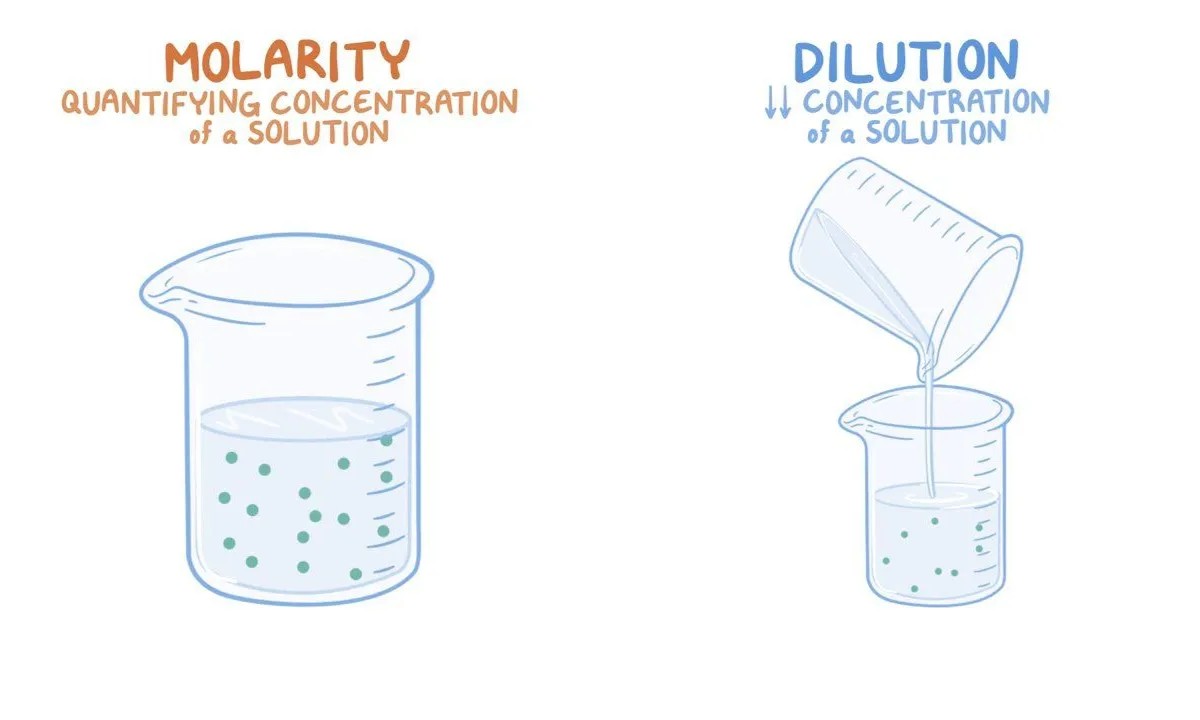
Molarity is a term often tossed around in chemistry classes, but what does it really mean? Molarity measures the concentration of a solution, specifically the number of moles of a solute per liter of solution. Imagine you’re making lemonade: the sugar you add is the solute, the water is the solvent, and the resulting lemonade is the solution. Understanding molarity helps chemists predict how substances will react with each other. It’s crucial for experiments, industrial processes, and even medicine. Whether you’re a student, a curious mind, or someone needing a refresher, these 29 facts about molarity will make you a whiz in no time!
What is Molarity?
Molarity is a fundamental concept in chemistry that measures the concentration of a solute in a solution. It's expressed in moles of solute per liter of solution. Understanding molarity helps chemists predict how substances will react in different scenarios.
- Molarity is denoted by the symbol M.
- It is calculated using the formula: M = moles of solute / liters of solution.
- Molarity is temperature-dependent because the volume of a solution can change with temperature.
- It is crucial for stoichiometry in chemical reactions, ensuring the correct proportions of reactants.
Importance of Molarity in Chemistry
Molarity plays a vital role in various chemical processes and experiments. It helps scientists and students alike to understand and predict the outcomes of reactions.
- Molarity allows chemists to prepare solutions with precise concentrations.
- It is essential for titration, a technique used to determine the concentration of an unknown solution.
- Molarity helps in calculating the pH of a solution, which is vital for many biological and chemical processes.
- It is used in calculating the ionic strength of a solution, which affects reaction rates and solubility.
Practical Applications of Molarity
Beyond the lab, molarity has practical applications in various industries and everyday life. It ensures consistency and safety in products and processes.
- In pharmaceuticals, molarity ensures the correct dosage of active ingredients in medications.
- It is used in the food industry to maintain the consistency of flavors and preservatives.
- Molarity helps in water treatment processes to determine the correct amount of chemicals needed for purification.
- It is crucial in environmental science for monitoring pollutant concentrations in water bodies.
Molarity vs. Molality
While molarity measures concentration based on volume, molality is based on the mass of the solvent. Understanding the difference is important for accurate chemical calculations.
- Molality is denoted by the symbol m.
- It is calculated using the formula: m = moles of solute / kilograms of solvent.
- Unlike molarity, molality is not affected by temperature changes.
- Molality is often used in colligative properties, such as boiling point elevation and freezing point depression.
Historical Background of Molarity
The concept of molarity has evolved over time, contributing significantly to the field of chemistry.
- The term "molarity" was first introduced by the German chemist Jacobus Henricus van 't Hoff in the late 19th century.
- Van 't Hoff's work on osmotic pressure and chemical kinetics laid the foundation for modern chemical concentration measurements.
- The development of molarity helped standardize chemical reactions and experiments, making results more reproducible.
- Molarity has since become a fundamental concept taught in chemistry education worldwide.
Calculating Molarity: Step-by-Step
Understanding how to calculate molarity is essential for anyone studying or working in chemistry. Here’s a simple guide.
- Determine the number of moles of solute: Use the formula moles = mass (g) / molar mass (g/mol).
- Measure the volume of the solution in liters.
- Apply the molarity formula: M = moles of solute / liters of solution.
- Ensure all measurements are accurate to avoid errors in the final concentration.
Fun Facts About Molarity
Molarity isn't just a dry scientific concept; it has some interesting and fun aspects too.
- The concept of molarity can be applied to everyday cooking, such as making a perfect cup of coffee by controlling the concentration of coffee grounds.
- Molarity is used in winemaking to control the fermentation process by adjusting the concentration of sugars and yeast.
- In the aquarium hobby, molarity helps in maintaining the right concentration of salts and minerals for fish health.
- Molarity can be a fun way to understand the concentration of sugar in soft drinks, making it a great educational tool for students.
- The concept of molarity is even used in space missions to ensure the correct concentration of chemicals for life support systems.
The Final Word on Molarity
Molarity is a key concept in chemistry. It measures the concentration of a solution, helping scientists understand how substances interact. Knowing molarity can make experiments more accurate and predictable. It’s calculated by dividing the number of moles of solute by the volume of the solution in liters. This simple formula is essential for anyone working in a lab or studying chemistry.
Understanding molarity can also help in everyday life. For example, it’s used in medicine to prepare solutions with precise concentrations. It’s also important in environmental science for measuring pollutants in water.
Grasping the basics of molarity opens the door to deeper scientific knowledge. It’s a fundamental concept that’s both practical and fascinating. Whether you’re a student, a professional, or just curious, knowing about molarity can enrich your understanding of the world.
Was this page helpful?
Our commitment to delivering trustworthy and engaging content is at the heart of what we do. Each fact on our site is contributed by real users like you, bringing a wealth of diverse insights and information. To ensure the highest standards of accuracy and reliability, our dedicated editors meticulously review each submission. This process guarantees that the facts we share are not only fascinating but also credible. Trust in our commitment to quality and authenticity as you explore and learn with us.
